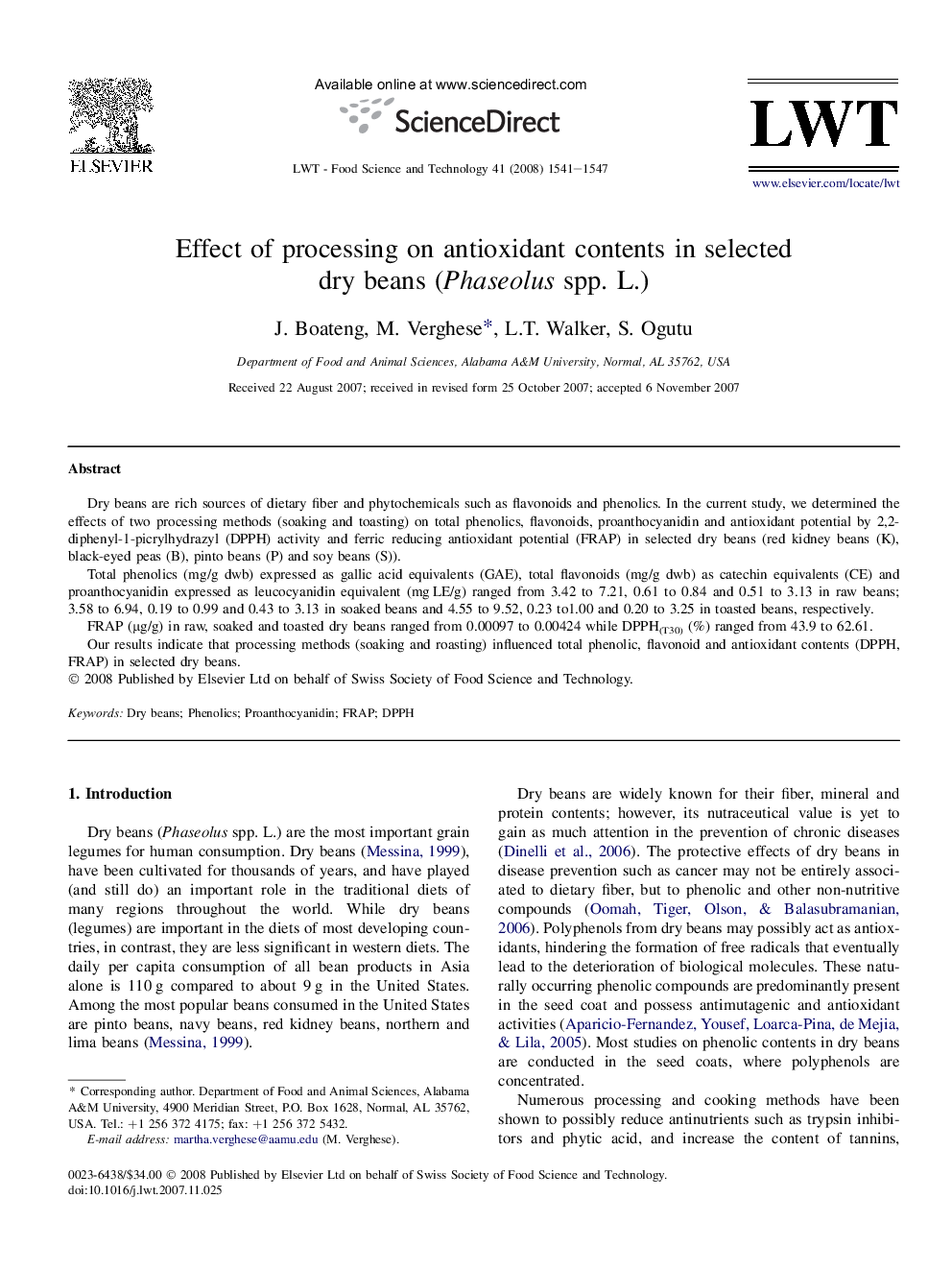| Article ID | Journal | Published Year | Pages | File Type |
|---|---|---|---|---|
| 4564721 | LWT - Food Science and Technology | 2008 | 7 Pages |
Dry beans are rich sources of dietary fiber and phytochemicals such as flavonoids and phenolics. In the current study, we determined the effects of two processing methods (soaking and toasting) on total phenolics, flavonoids, proanthocyanidin and antioxidant potential by 2,2-diphenyl-1-picrylhydrazyl (DPPH) activity and ferric reducing antioxidant potential (FRAP) in selected dry beans (red kidney beans (K), black-eyed peas (B), pinto beans (P) and soy beans (S)).Total phenolics (mg/g dwb) expressed as gallic acid equivalents (GAE), total flavonoids (mg/g dwb) as catechin equivalents (CE) and proanthocyanidin expressed as leucocyanidin equivalent (mg LE/g) ranged from 3.42 to 7.21, 0.61 to 0.84 and 0.51 to 3.13 in raw beans; 3.58 to 6.94, 0.19 to 0.99 and 0.43 to 3.13 in soaked beans and 4.55 to 9.52, 0.23 to1.00 and 0.20 to 3.25 in toasted beans, respectively.FRAP (μg/g) in raw, soaked and toasted dry beans ranged from 0.00097 to 0.00424 while DPPH(T30) (%) ranged from 43.9 to 62.61.Our results indicate that processing methods (soaking and roasting) influenced total phenolic, flavonoid and antioxidant contents (DPPH, FRAP) in selected dry beans.
